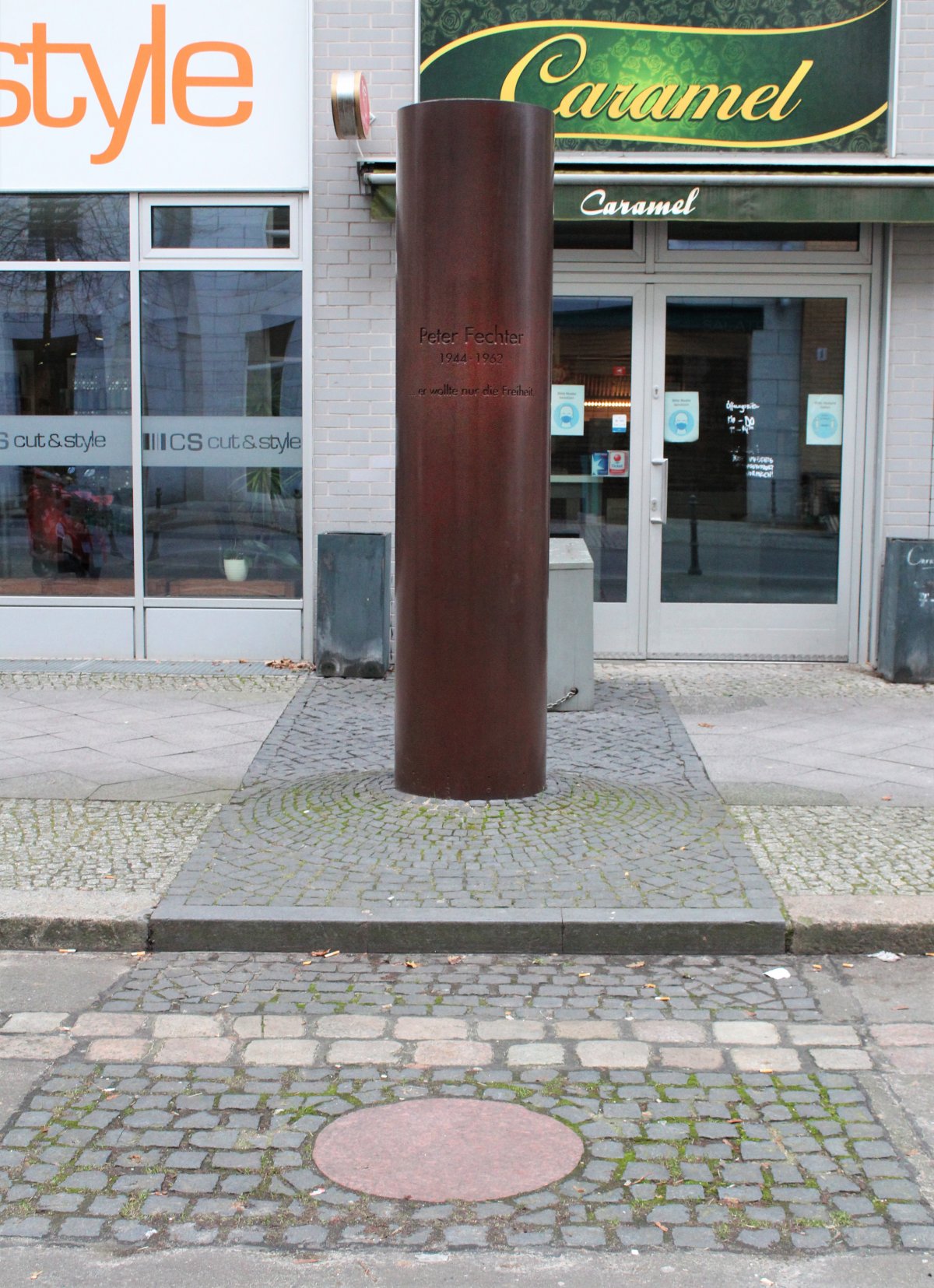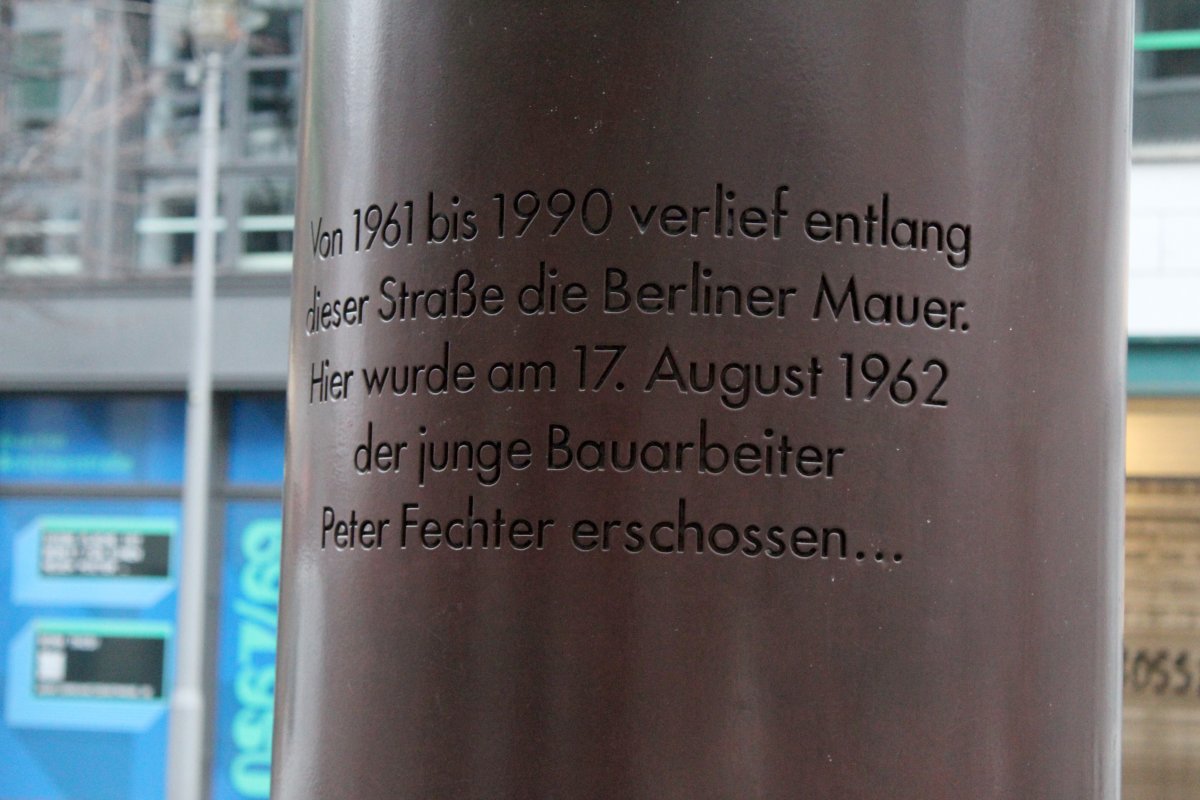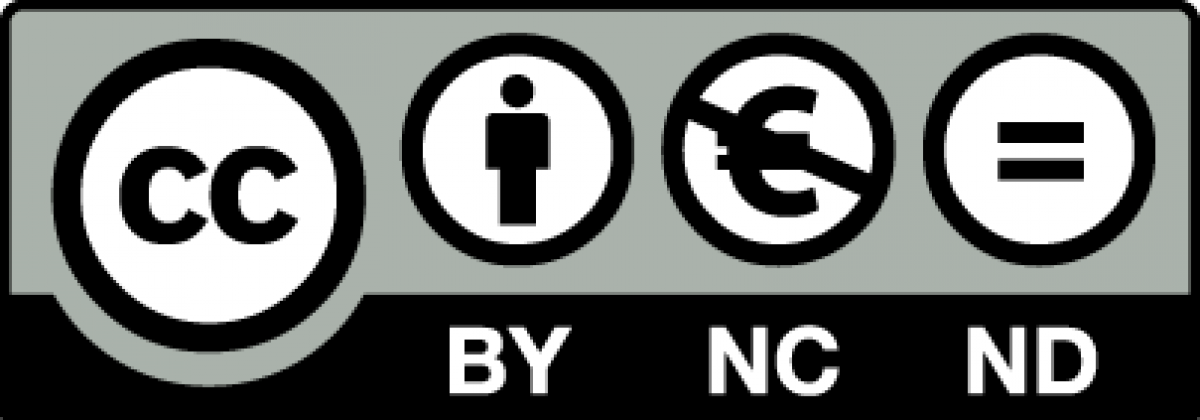The Memorial Site for Peter Fechter
Peter Fechter is one of the most well-known victims of the Berlin Wall. GDR border guards shot the 18-year-old as he tried to flee to West Berlin. Today, a memorial column in Berlin-Mitte, 200 meters away from the former Checkpoint Charlie, commemorates his death. It is the result of many years of commitment to the culture of remembrance.By Christine Bader and Merle Kluge
The steel column and granite slab in front of it in memory of Peter Fechter in Zimmerstraße in Berlin-Mitte, 9 January 2022 (Photo: Merle Kluge, CC BY 4.0)
On August 17, 1962, two 18-year-old work colleagues, Peter Fechter and Helmut Kulbeik, attempted to flee over the Wall toward West Berlin. In the process, they were fired upon by GDR border guards. While Kulbeik was able to cross the Wall unharmed, Fechter was hit by the bullets. For fifty minutes, he lay seriously injured in the border strip at the foot of the Wall, with no help from the GDR border guards. On both sides of the Wall, there were eyewitnesses. Despite their loud requests, neither the West Berlin police nor the Western Allied guards at nearby Checkpoint Charlie climbed over the Wall to help the bleeding Fechter. The reason was the tense political situation: the tank standoffwas only ten months old, and they feared triggering a military conflict. It stands to reason that the soldiers on both sides of the Wall were afraid of being fired upon themselves. Moreover, the GDR border guards were not allowed to enter the border strip without an order from an officer on duty. However, the GDR officer in charge did not reach the scene until half an hour after the shots had been fired.
The West Berlin public lamented the inhumanity of the GDR border regime. Already a few hours after Peter Fechter's death, there were massive and persistent protests from West Berliners. Some of them laid flowers and wreaths for the deceased at the Wall. Dieter Beilig placed a wooden cross as close as possible to the Wall. The inscription "Wir klagen an (We accuse you)" pointed to the side of the GDR. Beilig was a West Berlin activist against the Berlin Wall, later founded the Peter Fechter Memorial Movement, and was arrested and shot in East Berlin in 1971. The memorial site for Fechter changed over time. The cross erected by Beilig was replaced by another wooden cross. Civil society actors encouraged the expansion and maintenance of the memorial so that it became a permanent place of remembrance. Politicians from Germany and abroad, representatives of initiatives, and tourists visited the wooden cross.

The inscription on the back of the memorial column facing the sidewalk, 9 January 2022 (Photo: Merle Kluge, CC BY 4.0)
Biedermann had hoped that the design of the monument could also be adopted to commemorate other victims of the Berlin Wall elsewhere in the city, but this was not realized. However, Biedermann's monument was neither the first nor the only memorial to a victim of the Wall. Civil society groups particularly had been campaigning for the installation of memorials to the first Wall victims since their deaths. Memorials to other victims of the Wall include the white crosses at Friedrich-Ebert-Platz and the Window of Remembrance on the grounds of the Berlin Wall Memorial on Bernauer Strasse.
This text is published under the Creative Commons license "CC BY-NC-ND 4.0". You may share the text by mentioning the license CC BY-NC-ND 4.0 and the authors. Copyright information for the images can be found in the image captions.



